| |
|
07.
 | Sculpture sequence : Guilty
| Sculpture sequence : Guilty |
| |
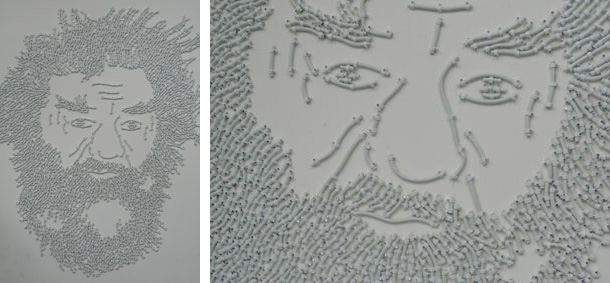
'' The work is like a snapshot and explores the videos of Hussein’s arrest and trial, filmed in a very theatrical way.
It studies the « judiciary » function of the images, the stakes at play behind their circulation and their effect on audiences. ''
Studio Fatmi, July 2017
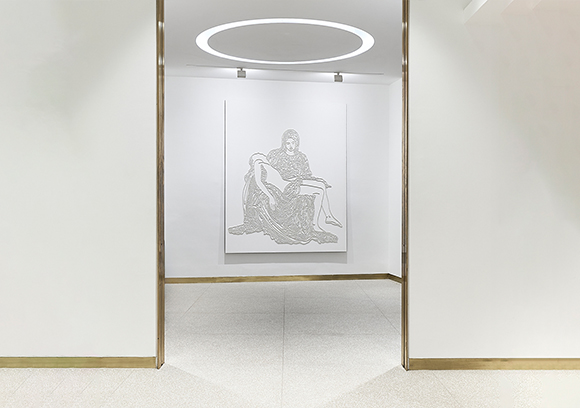
La Pieta
Exhibition view from If you don't know me by now, Ceysson & Bénétière, 2024, Lyon.
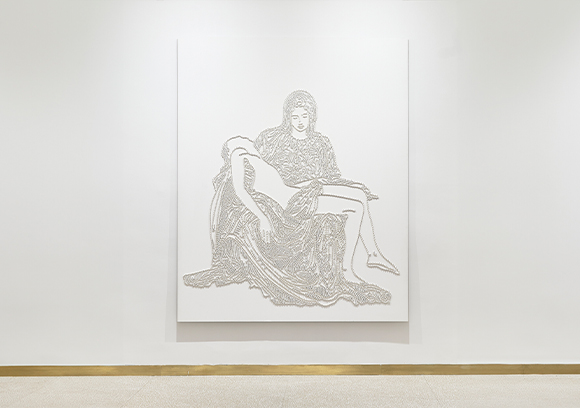
La Pieta
Exhibition view from If you don't know me by now, Ceysson & Bénétière, 2024, Lyon.
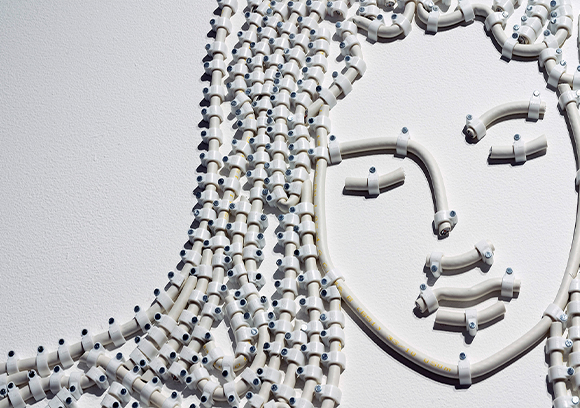
La Pieta
Exhibition view from If you don't know me by now, Ceysson & Bénétière, 2024, Lyon.
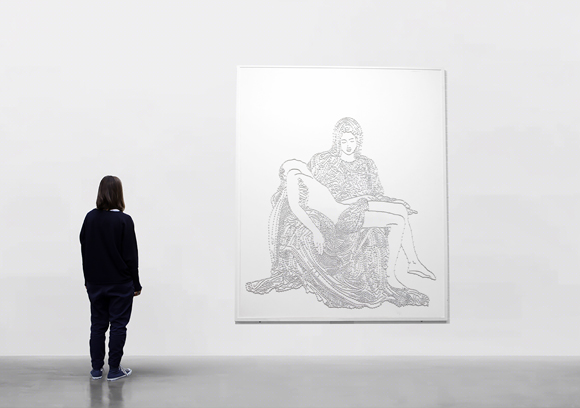
La Pieta
Exhibition view from #Cometogether, Edge of Arabia, 2012, London.
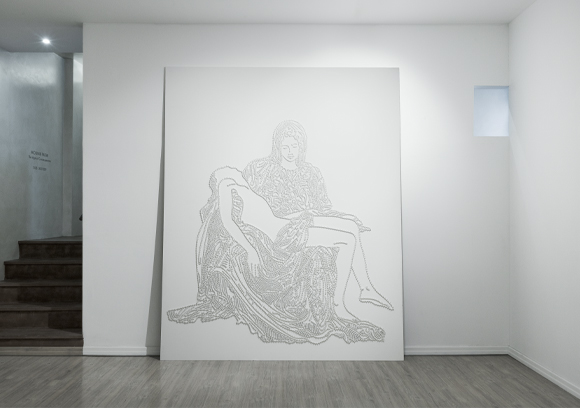
La Pieta
Exhibition view from #Cometogether, Edge of Arabia, 2012, London.
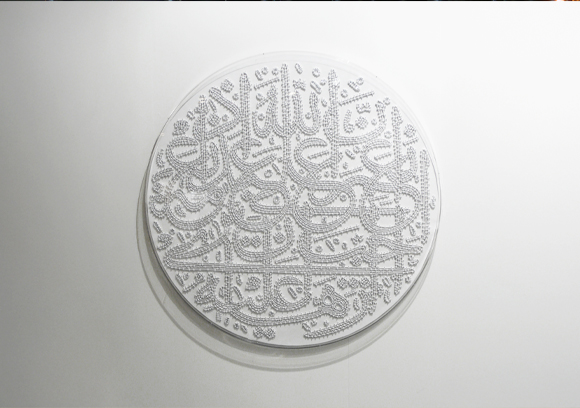
The Machinery
Exhibition view from Art Brussels, Conrads Gallery, 2010, Brussels.
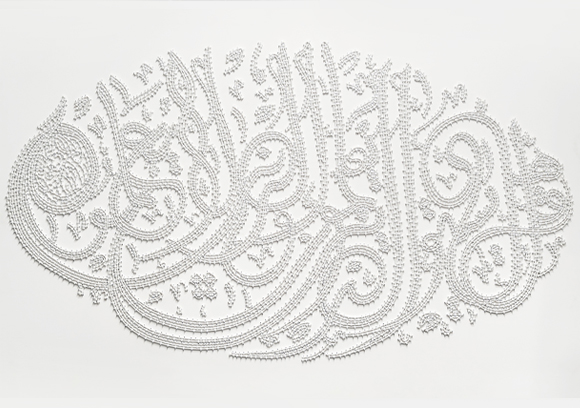
People know, people don't know
Exhibition view from Jusqu'au bout de la poussière, Espace des arts, 2004, Colomiers.
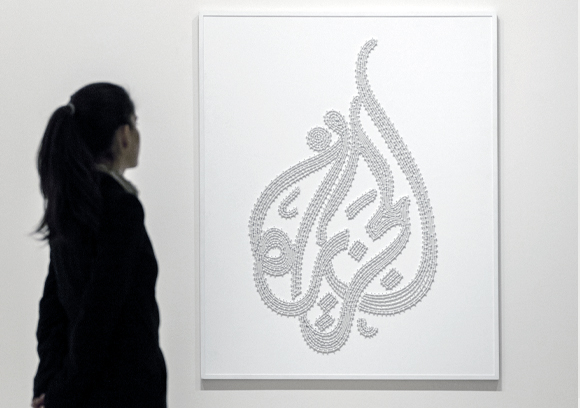
Al Jazeera
xhibition view from Looking at the World Around You, Santander Art Gallery, 2016, Madrid.
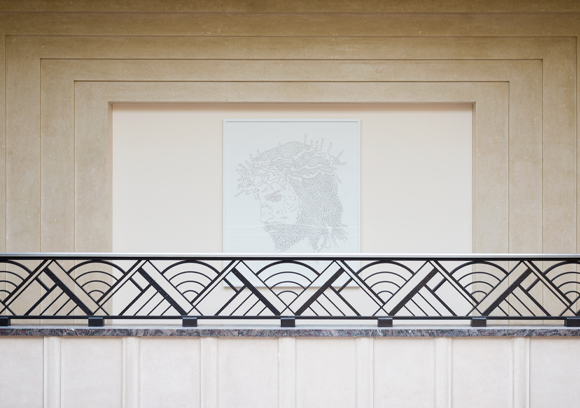
Presumed Innocent
Exhibition view from Icons, Fondation Boghossian, 2021, Brussels.
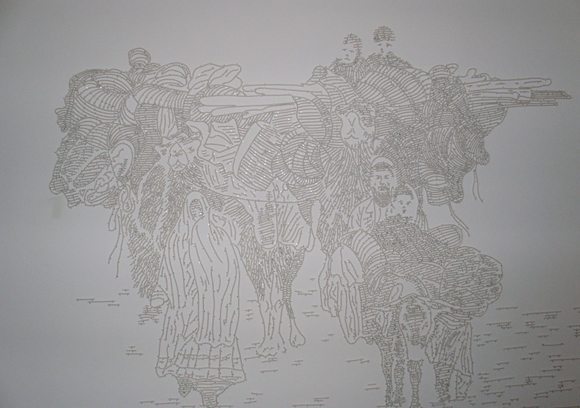
Kabul
Exhibition view from Comprendra bien qui comprendra le dernier, CAC Le Parvis, 2004, Ibos.
|
|
2007, coaxial antenna cable on wood panel, staples, 160 x 130 cm.
Courtesy of the artist and ADN Galeria, Barcelona.
Ed. of 5 + 1 A.P.
|
|
|
| Collection of Navarra, France
Sculpture réalisée au moyen de câbles coaxiaux blancs, utilisés pour la transmission des images jusqu'à la fin des années 90 et qui se retrouvent dans de nombreuses œuvres de mounir fatmi, « Coupable » s'inscrit dans une série de bas-reliefs qui explorent les ressorts de nos sociétés de la communication et des médias et étudient la manière dont les informations circulent dans nos sociétés contemporaines. Assemblés au moyen d'épingles et fixés à un panneau en bois blanc, les câbles forment le portrait de l'ancien chef d'état irakien Saddam Hussein, tel qu'il est apparu dans les médias au moment de son arrestation le 13 décembre 2003, filmée par les forces armées américaines.
La sculpture questionne les pouvoirs de l'image de propagande et tente de mettre en évidence le rôle des médias dans l'élaboration et la diffusion d'une image qui a fait le tour du monde et qui a déclenché de vives réactions. L'œuvre fait un arrêt sur image et explore les vidéos de l'arrestation et du jugement, filmées de manière très théâtrale. Elle étudie la fonction « judiciaire » des images, les enjeux qui sous-tendent leur diffusion et ses effets sur le public.
mounir fatmi fait avec la sculpture « Coupable » le choix d'une mise en scène qui donne à voir le spectacle tout en exposant ce qui se trame en coulisse : interventions du metteur en scène ou des techniciens de plateau, changements de costumes des comédiens… Constitué de câbles coaxiaux, le portrait est lui explicitement désigné comme un objet médiatique, relevant d'une mise en scène et d'une construction, un produit de la société de l'image et de l'information. Abordant la vidéo de l'arrestation en tant qu'opération de communication, le portrait recense les éléments importants de la mise en scène que les médias et journaux du monde entier ont également relevés et commentés avec plus ou moins de distance, en utilisant des expressions telles que « clochard hirsute » au « regard perdu dans le vide », extrait d'un « trou de souris », puis soumis à un « examen médical humiliant », pour qualifier l'ancien dirigeant et son attitude. Autant d'images qui sont à l'opposé des représentations officielles et codifiées du chef d'état dans ses bureaux ou quartiers généraux, entouré de la considération de ses ministres ou craint, et dont le but est d'achever le dictateur en le montrant sans pouvoir, démuni, résigné et soumis. La vidéo de l'arrestation livre une image de l'ancien dictateur déchu au caractère très théâtral, dont la fonction est émotive et cathartique : elle a pour but de déclencher de vives émotions dans le public. L'humiliation de Saddam Hussein constitue les premiers signes d'un mouvement de révolte contre les régimes autoritaires et patriarcaux à travers les sociétés arabes qui évoluera vers les Printemps Arabes. Mon père a perdu toutes ses dents, maintenant je peux le mordre, écrit mounir fatmi dans un manifeste publié en 1998.
Studio Fatmi, Juillet 2017.
|
|
« Guilty » is a sculpture created using white coaxial cable, a material used for the transmission of images until the late 1990s and which can be found in many of mounir fatmi’s pieces. It is part of a series of bas-reliefs that explore the internal functioning of today’s societies of communication and media and study the way information circulates in our modern societies. Assembled with pins and fixed on a white wood panel, the cables form the portrait of the former Iraqi head of state Saddam Hussein as he appeared in the media at the time of his arrest, on 13 December 2003, filmed by American forces.
The sculpture questions the powers of images and propaganda and tries to highlight the role of the media in the elaboration and circulation of an image that went around the world and triggered strong reactions. The work is like a snapshot and explores the videos of Hussein’s arrest and trial, filmed in a very theatrical way. It studies the « judiciary » function of the images, the stakes at play behind their circulation and their effect on audiences.
With the sculpture « Guilty », mounir fatmi chooses a composition that shows the spectacle while at the same time exposing what goes on behind the scenes: the interventions of the director and the technicians, the costume changes… Made of coaxial cables, the portrait is explicitly designated as a media object, with a staging and a construction, the product of a society of image and information. Categorizing the video of the arrest as an operation of communication, the portrait inventories the important elements in a staging that the media and newspapers from around the world also commented upon, with more or less distance, using expressions such as a « hirsute bum » with an « aimless gaze » pulled out of his « mouse hole », then submitted to a « humiliating medical exam » to describe the former leader and his attitude. These images are the exact opposite of the official, stiff representations of the head of state in his office or headquarters, surrounded with his faithful ministers and feared; their goal is to achieve the destruction of the dictator by showing him powerless, helpless, resigned and subdued. The video of the arrest shows an image of the former dictator with a strongly theatrical character whose function is emotional and cathartic: it aims to trigger strong emotions among the audience. The humiliation of Saddam Hussein is one of the first signs of the uprising against authoritarian and patriarchal regimes in Arab societies that will continue with the Arab Spring. « My father lost all his teeth, now I can bite », wrote mounir fatmi in a manifesto published in 1998.
Studio Fatmi, July 2017. |
|
|
|